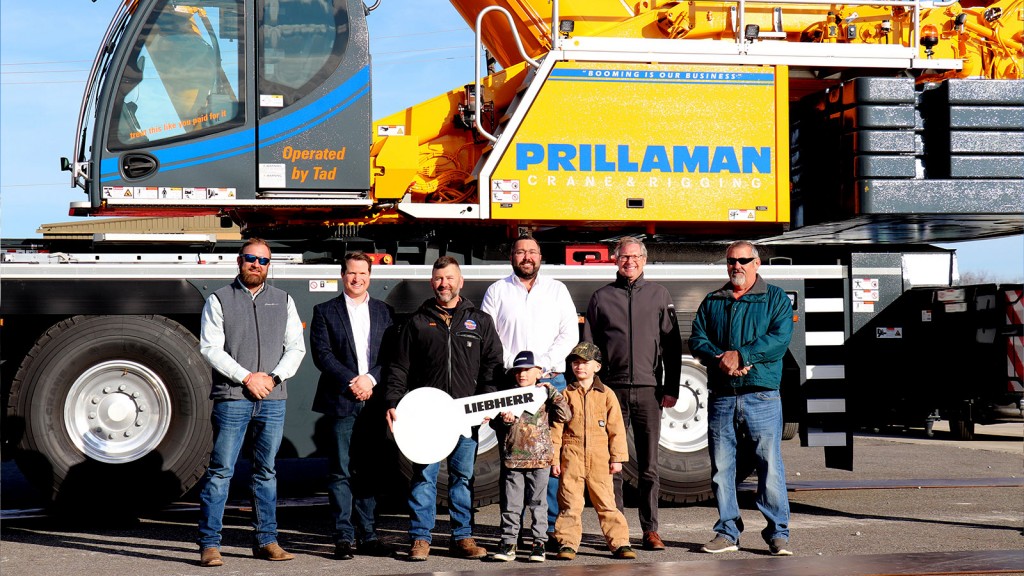Pilot project puts first autonomous ADT on jobsite
SafeAI and Obayashi team up to test Cat truck in real-world situation

Autonomous equipment is making inroads in various industry sectors, though the majority has been focused on mining operations to this point. A partnership between a major Japanese construction firm and a technology company is aiming to bring automation onto construction sites and expand its availability on a broader scale.
SafeAI is working with Obayashi Corporation to demonstrate the capabilities of automation on heavy construction equipment by operating an autonomous Caterpillar 725 articulated dump truck on a construction site in California. The goal will be to show that autonomous machines can handle the challenges of construction jobsites as well as larger machines that have proven successful in mining use.
"Mining has been using this . . . they were trying to do it even back in the 1990s. A lot of people are surprised by that. Trucks have been running autonomously for the last five or six years in various production mines in Australia and Canada," said Bibhrajit Halder, founder and CEO of SafeAI. "Technology-wise, the big truck and the small truck are very similar - and you can think of the same technology that will go into your passenger vehicle."
SafeAI's technology is designed to be retrofitted onto an existing vehicle, which can then be tasked to specific tasks on the jobsite, Halder said. Obayashi provided the 725 ADT for the pilot project, and SafeAI installed its hardware - sensors, electronics and components that allow the machine to operate as an autonomous unit. It's the software that makes the machine truly autonomous, though, Halder noted.
"This is the software that replaces the operator . . . the AI that is making decisions on board so that the vehicle can drive, see what's around it, and make sure it avoids all the objects along the way. It can make high-level decisions on board," he explained.
Truck tasked to load-haul-dump cycle
In the case of the pilot, the truck will be operated on an aggregate site, tasked to operate a load-haul-dump cycle, Halder described. "The truck will go from point A to B, a loader will load the truck, then the truck will go from point B to C and dump, then keep doing that every day."
Halder, who worked on autonomous mining vehicle development previously, said that autonomous trucks generally have the same challenges no matter their size.
"These vehicles are equipped to know what is going on around them, to know what objects and other vehicles are there and make real-time decisions such as avoiding them while going from point A to B," he explained. "It's the same complexity, whether it's a passenger vehicle or ADT or bigger truck - really, the only thing is the cost is different to make then autonomous."
SafeAI's solution is an open, interoperable full stack autonomy platform, which focuses on allowing the machine it is integrated with to operate around the clock in a safe, productive solution. It takes advantage of radar, cameras and other sensors to detect activity around the machine, then processes that information to ensure that potential conflicts on the jobsite are eliminated.
"This technology is capable of handling quite a bit of complex information and a lot of variation, whether it's on a mine or quarry site," Halder said. "The perception and decision-making logic is going to be mature and transferable from one truck to another."
These kinds of autonomous machines are likely to find a home on large construction sites moving forward, Halder suggested.
"Megaconstruction sites will adopt it quickly - when I say megaconstruction site I mean when someone is building a dam over two years, or developing a portion of land over a two- or three-year time frame," he described. "They run over a long time, and the efficiency in finishing a job on time is a huge dollar value. From an ROI point of view they're willing to try out new technology and see the value."
In addition, those types of large sites are ideal for autonomous machines that are designed for repetitive operations like a load-haul-dump cycle. If those sites are moving dirt constantly for six months, autonomous machines make a lot of sense, Halder said. Also, large contractors are increasingly more interested in digitalization and data analysis to improve their operations, and autonomous machines provide greater amounts of data and insight.
"Combining autonomy and digitalization . . . the company will see a real ROI - they will save a real number dollar value in costs per project. Once you see that some of the early players showing the market they are saving 5, 10 or 20 percent of their overall cost, the industry will accelerate," Halder said. "The moment people show that real dollar value advantage, you have to adopt it, otherwise you're going to be out of business."
Further construction equipment in the works
A longer-term goal for SafeAI is to establish its solution for use in other types of construction equipment that perform similarly repetitive cycles on the jobsite. The company has already geared up a skid-steer loader to perform a load-haul-dump cycle successfully, and that is likely to be just the beginning. Halder said the company is currently working on projects with dozers, and as more is learned and successfully deployed into real-world situations, the possibilities will grow for contractors.
"You start with one truck or one dozer, and slowly move them into production. We learn a lot through that process . . . the beauty is that you're learning with your customer to see what works and doesn't work," Halder said. "Eventually you scale up and make more and more assets on a construction site semi or fully autonomous."



